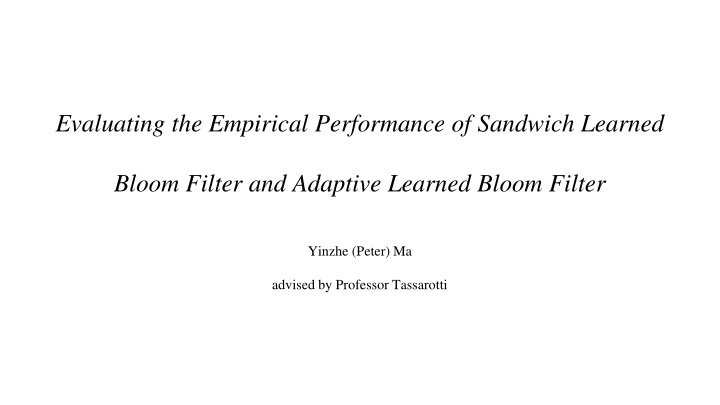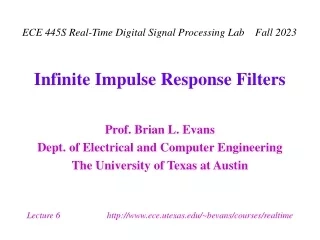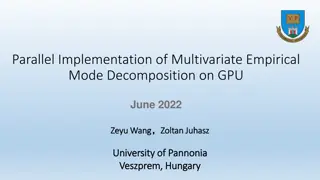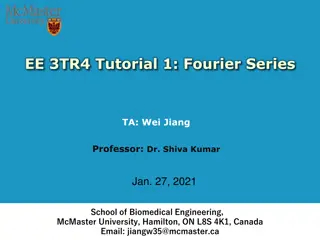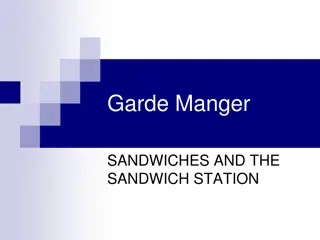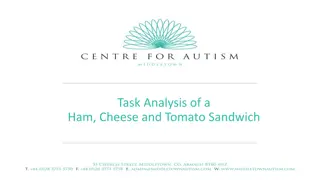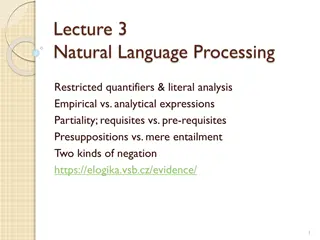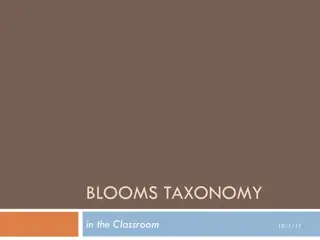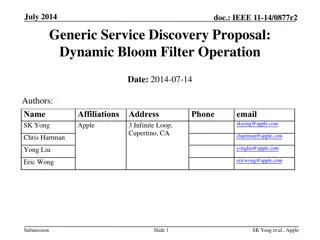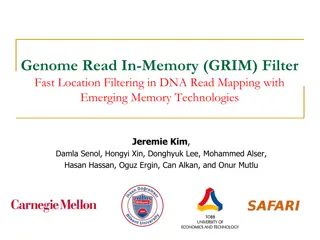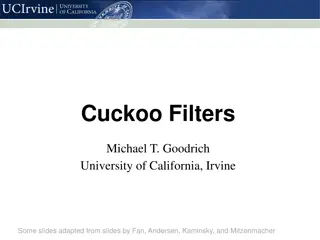Evaluating the Empirical Performance of Sandwich Learned Bloom Filter and Adaptive Learned Bloom Filter
This study delves into the performance evaluation of Standard Bloom Filter, Sandwiched Learned Bloom Filter, and Adaptive Learned Bloom Filter. The research explores trade-offs, false positive rates, memory efficiency, and implementation methods, presenting empirical results and comparisons between the data structures. The agenda includes project introduction, detailed analyses, conclusions, and more.
Download Presentation

Please find below an Image/Link to download the presentation.
The content on the website is provided AS IS for your information and personal use only. It may not be sold, licensed, or shared on other websites without obtaining consent from the author.If you encounter any issues during the download, it is possible that the publisher has removed the file from their server.
You are allowed to download the files provided on this website for personal or commercial use, subject to the condition that they are used lawfully. All files are the property of their respective owners.
The content on the website is provided AS IS for your information and personal use only. It may not be sold, licensed, or shared on other websites without obtaining consent from the author.
E N D
Presentation Transcript
Evaluating the Empirical Performance of Sandwich Learned Bloom Filter and Adaptive Learned Bloom Filter Yinzhe (Peter) Ma advised by Professor Tassarotti
Agenda Project Introduction Intro to Standard Bloom Filter Intro to Sandwiched Learned Bloom Filter + empirical results discussion Intro to Adaptive Learned Bloom Filter + empirical results discussion Comparison of Data Structures Conclusion
Project Introduction Standard Bloom Filter faces tradeoff between correctness and memory efficiency False Positive Rate Problem Sandwiched Learned Bloom Filter + Adaptive Learned Bloom Filter Exploration Validate these two newly proposed data structures from an empirical perspective Goal Explore necessary implementation methods of these two proposed data structures Background: A Bloom Filter is a set data structure that uses independent hash functions to store a set of elements; when querying elements from the same universe, a Bloom Filter gives out possible false positives and no false negatives.
Standard Bloom Filter 0 0 0 0 0 0 0 0 0 0 0 0 0 0 0 0 ... m An empty array A 1 2 3 4 5 6 7 8 9 10 ... n A set of data S A group of k independent, universal hash functions H Hash Function 1 Hash Function 2 Array A 1 0 0 0 0 0 0 0 0 1 0 0 0 1 0 0 0 0 False Positive: two values from S are being hashed to the same bit in A
Sandwiched Learned Bloom Filter To explore how Machine Learning Algorithms can help solve the trade off that the standard Bloom Filter faces Correctness vs. Memory Motivation Sandwiched Learned Bloom Filter Learned Bloom Filter
Sandwiched Learned Bloom Filter -- Details False positive rate of the backup filter False Positive rate of the structure False Positive Rate Analysis False positive rate of Learned Function False positive rate of Initial Filter Take derivative to find the minimum False Positive Rate Optimal memory allocated to the backup filter Memory Allocation Analysis Optimal # of bit per element for the backup filter False Negative rate of the Learned Function False Positive rate of the Learned Function
Sandwiched Learned Bloom Filter -- Experiments Our empirical experiment validates the theoretical optimal memory allocation that once the backup filter reaches a fixed threshold, all other memory should be given to the initial filter
Adaptive Learned Bloom Filter 1. 2. Information provided by the ML algorithm is wasted Dependency on the query data set staying within the same universe is too strong Motivation Sandwiched Structure Initial Filter would be a standard Bloom Filter # of hash functions used for the backup filter is determined by its group assignment (the estimation given by the learned function) Higher the score, the fewer the hash functions used Est. given by the ML function
Adaptive Learned Bloom Filter -- Details False Positive Rate of Group j K is the # of hash functions used in Group j A total of g groups False Positive Rate of the data structure Probability of an arbitrary query falling in Group j Maximum number of hash functions used Hyper- parameters C, where c= # of groups g
Adaptive Learned Bloom Filter -- Experiments With 10 segments and c=0.5, it seems that we need to allocate as much memory to the backup filter as possible. However, the experiments we have done so far are not enough for us to be certain about such observation Non-sandwiched Structure
Comparison of Data Structures Initial Size (Without compression) Final Size (With compression) Pruning Weight Clustering Quantization
Conclusion Sandwich Learned Bloom Filter is more efficient on this example than the standard bloom filter especially when the memory size is below 3.5 bits per element after model compression We did not find Adaptive Learned Bloom Filter to be better than the other two data structures, but this could be due to its complicated tuning process
Reference [1] Michael Mitzenmacher. 2018. A Model for Learned Bloom Filters and Optimiz- ing by Sandwiching. In Advances in Neural Information Processing Systems 31, S. Bengio, H. Wallach, H. Larochelle, K. Grauman, N. Cesa-Bianchi, and R. Gar- nett (Eds.). Curran Associates, Inc., 464 473. [2] Zhenwei Dai and Anshumali Shrivastava. 2019. Adaptive Learned Bloom Filter (Ada-BF): Efficient Utilization of the Classifier. arXiv preprint arXiv:1910.09131 (2019). [3] T. Kraska, A. Beutel, E. H. Chi, J. Dean, and N. Polyzotis. The Case for Learned Index Structures. https://arxiv.org/abs/1712.01208, 2017.
